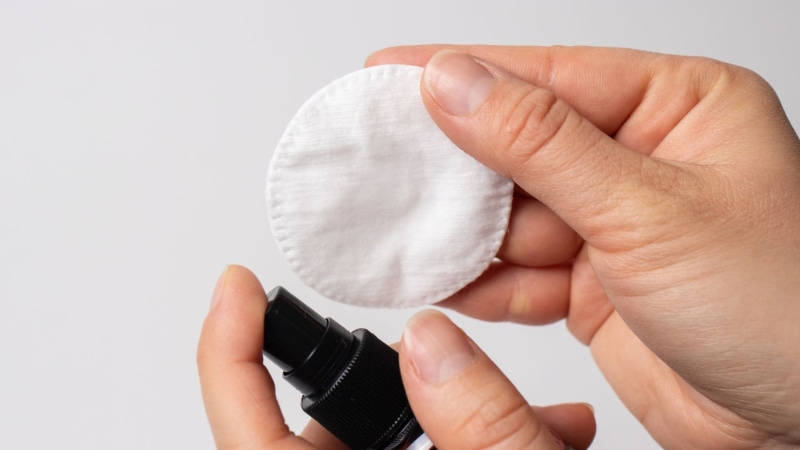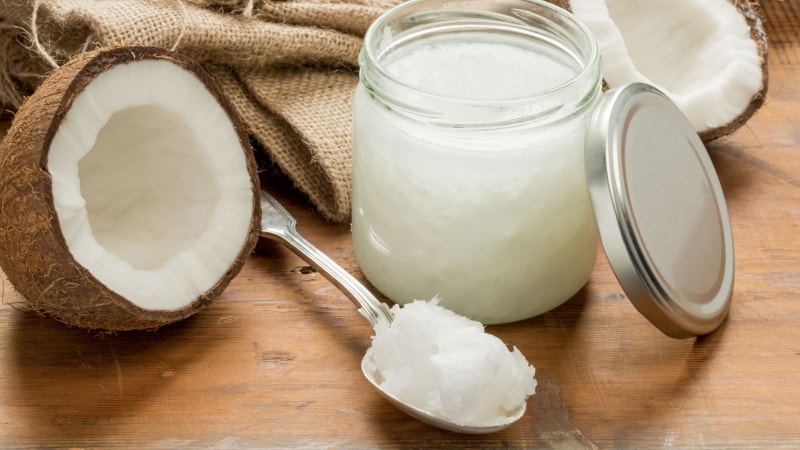Not every self-tanner effect comes out perfectly. Whether due to uneven application of the product or holding it too long on the skin, sometimes unwanted streaks and spots appear. How to deal with them? Here are proven methods for washing off self-tanner.
How to wash off self-tanner? Peeling as the first step
Peeling is the primary way to get rid of unwanted self-tanner. It allows us to remove the dead skin, under which the unevenly applied product is hidden. When choosing a scrub, it is worth betting on the coarse-grained one, which will effectively remove the remains of self-tanner.
Peeling, as a method of mechanical exfoliation of the skin, works by abrading dead skin cells. In the case of self-tanner that has not been evenly applied, exfoliation will help to remove the excess, thereby eliminating unsightly streaks or spots. This is especially important in areas where the skin is drier and tends to accumulate more product, such as elbows, knees and ankles.
There are different types of scrubs on the market – from fine-grained, to medium-grained, to coarse-grained. For self-tanner, the latter will work best. The coarse-grained texture will allow the skin to be thoroughly and deeply cleansed, while effectively removing any residual product.
It is also worth remembering that regular use of scrubs, even if we do not have a problem with self-tanner, will positively affect the condition of our skin. Exfoliation of dead cells accelerates the renewal process of the skin, making it smoother, softer and more radiant. In addition, regular exfoliation of the skin will make subsequent applications of self-tanner more even and natural.
Tonic with alcohol for deeper cleansing
If exfoliation has not brought the desired results, it is worth reaching for a tonic with alcohol. Soak a cotton ball and rinse with it the areas where the self-tanner was poorly applied. The alcohol will help dissolve the product and remove it more effectively.
Alcohol, an ingredient in many facial toners, is known for its cleansing and antibacterial properties. In the context of self-tanner, it acts as an effective solvent that can penetrate deep into the epidermis and dissolve product residue. Thus, even if the self-tanner has penetrated deeper into the skin, alcohol will help remove it.
However, it is worth remembering that excessive use of alcohol-based products can dry out the skin. Therefore, after using a toner with alcohol, it’s a good idea to apply a moisturizing cream or oil to compensate for the loss of moisture and avoid the feeling of skin tightness.
When choosing a tonic, it is worth paying attention to its alcohol concentration. Some toners have a higher alcohol concentration and are more effective at removing self-tanner, but they can also be more irritating to the skin. That’s why it’s a good idea to start with a product with a lower alcohol concentration and gradually increase its strength, observing the skin’s reaction.

With what to wash off self-tanner? Lemon – the natural way!
Lemon, thanks to its brightening properties, is a great way to get rid of self-tanner stains. It can be used in the form of juice, with which you wash the skin, or in the form of patches, which you apply to the problem areas.
Lemon is rich in citric acid, which acts as a natural bleaching agent. This acid can gently exfoliate the epidermis, which speeds up the process of removing self-tanner. In addition, citric acid has an antibacterial effect, which further benefits the condition of the skin.
When using lemon as a method to wash off self-tanner, it is worth remembering a few important points. First, lemon juice can be irritating to the skin, so it’s always a good idea to start with a short test on a small patch of skin. If there is no irritation after a few minutes, you can safely apply lemon to larger areas of skin.
Secondly, it is a good idea to avoid sun exposure after applying lemon juice. Citric acid can make the skin more sensitive to UV rays, which increases the risk of sunburn. That’s why it’s a good idea to apply UV sunscreen or avoid the sun for a few hours after a lemon treatment.
It’s also worth remembering that lemon may not produce immediate results. Depending on the depth and intensity of your self-tanner stains, you may need to repeat the treatment several times. However, regular use of lemon will certainly bring visible results in the form of brightening spots and restoring natural skin tone.
Be sure to also check out: Pants for winter 2023 – what cuts to choose?
Specialized cosmetics for removing self-tanner
Specialized cosmetics for removing self-tanner are also available on the market. Such products, such as the St Moriz Tan Removal Foam, for example, make it easier to correct a poorly applied product and help quickly get rid of the unwanted effect.
Specialized self-tanner removal cosmetics are designed for those who are looking for a quick and effective solution to the problem of unevenly applied product. Unlike home remedies such as lemon or scrubbing, these products are designed to work deeply and effectively without irritating the skin.
Most of these cosmetics work by dissolving the self-tanner, allowing it to be easily removed with a cotton ball or cotton pad. This makes the process of removing the product not only effective, but also gentle on the skin.
When choosing a specialized cosmetic, it is worth paying attention to its composition. Ideally, the product does not contain alcohol, which can dry the skin, or other potentially irritating ingredients. It’s also worth checking the reviews of other users and testing the product on a small patch of skin before full application.
It is also worth remembering that while specialized cosmetics for removing self-tanner are effective, they are not always necessary. In many cases, home remedies such as scrubbing or lemon can be just as effective. However, if you are looking for a quick and reliable solution, it is worth considering buying a specialized product.
Home remedies for washing off self-tanner
In addition to the methods mentioned above, it’s also worth considering home remedies for washing off self-tanner. One way, for example, is to take an oil bath, which will help soften the skin and make it easier to remove the product. Another way is to use a sugar scrub, which will effectively cleanse the skin.
Home methods for washing off self-tanner are very popular due to their availability and low cost. What’s more, many of them are not only effective, but also beneficial to the skin. Here are some proven ways:
Milkbath: Milk contains lactic acid, which gently exfoliates the skin and helps remove self-tanner. Just add a few cups of milk to a warm bath and soak in it for 20-30 minutes. After the bath, it’s a good idea to wash your skin with a gentle scrub.
Sugar scrub: Sugar scrub is an excellent way to mechanically exfoliate the skin. You can prepare it yourself by mixing an equal amount of sugar with coconut oil or olive oil. Such a scrub will not only help remove the remains of self-tanner, but will also moisturize and nourish the skin.
Water with vinegar: Vinegar, like lemon, has brightening properties. You can prepare a solution of equal parts of water and vinegar, and then wash your skin with it. It is a good idea to moisturize the skin well after the treatment, as vinegar can dry it out.
Coconut oil: Coconut oil is not only an excellent moisturizer, but also an effective self-tanner remover. Just apply it to the skin, gently massage it in, and then rinse with warm water and soap.
White toothpaste: White toothpaste can also be used to remove self-tanner stains, especially on hard-to-reach areas such as hands and feet. Just apply it to the skin, gently massage it in and rinse it off with warm water.

Summary: How to effectively get rid of self-tanner?
Self-tanner is a great way to achieve a beautiful golden tan without exposing your skin to the sun’s harmful rays. However, the effect is not always what we would expect. Fortunately, there are many ways to wash off self-tanner and get rid of unwanted streaks and spots. The key is to choose the right method and be patient.
How to wash off self-tanner – frequently asked questions.
To get rid of self-tanner quickly, you can exfoliate your skin or use a toner with alcohol.
Yes, self-tanner gradually washes off with the natural exfoliation of the skin, but you can speed up the process by using the right methods.
You can use a sugar scrub, a milk bath or water with vinegar to wash off self-tanner at home.
Self-tanner usually starts to fade after 3-7 days, depending on the product and skin care.
After applying self-tanner, it’s a good idea to wait at least 6-8 hours before taking a shower to allow the product to absorb.
Stains on the hands after self-tanner can be removed with lemon juice or tonic with alcohol.

